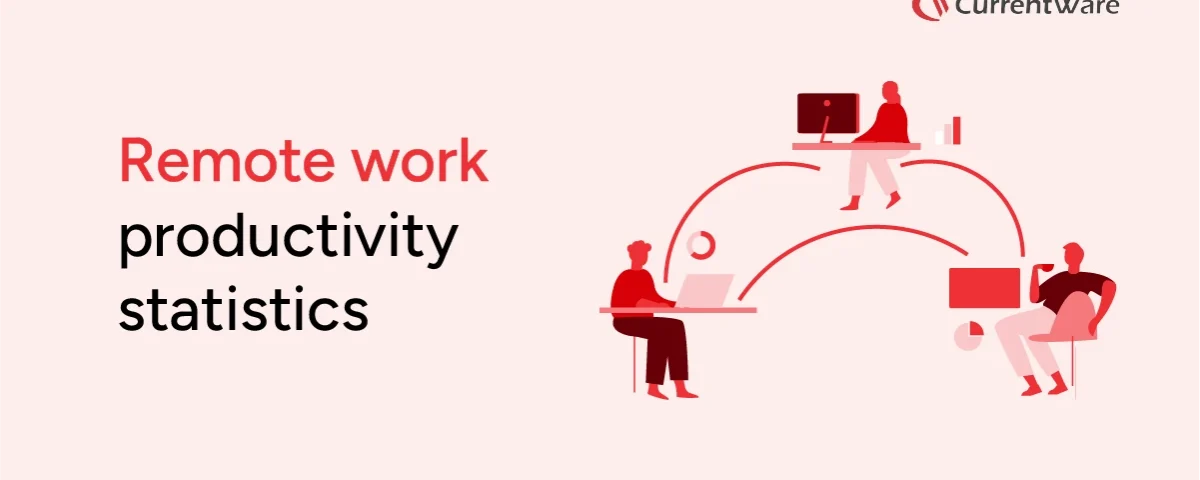Remote Work Productivity Statistics: Data, Trends & Insights

The world of work has transformed dramatically, with remote work becoming a central pillar for businesses worldwide. As we move through 2025, the conversation about productivity in remote settings remains front and center—and the latest data reveals some eye-opening trends. This article will highlight key remote work productivity statistics to reveal how productive remote and hybrid workers are.
How Productive Are Remote Workers?
Remote work productivity statistics vary, with a mix of employees self-reporting being more productive while working remotely and others reporting being tempted by distractions such as web surfing and online shopping. One study found that workers who prefer remote work are 12% faster and more accurate at data-entry tasks, showcasing how individual preferences can influence productivity outcomes.
Since the pandemic began, labor statistics and new research have tracked a significant increase in remote work opportunities and remote jobs, with more jobs now compatible with remote or hybrid arrangements than ever before. Some 75 million U.S. employees have jobs compatible with remote work, reflecting the widespread potential for this shift.
58% of remote workers surveyed by Buffer stated they are either very or somewhat engaged with their job, 12% said they are neither engaged nor unengaged, and 30% stated they are either somewhat unengaged or very unengaged. 70% of the remote workers said working remotely made it easier to do focused work, as well as manage stress (65%) and avoid distractions (50%). Comparing fully remote, hybrid workplace, and full-time office arrangements, fully remote workers often report higher engagement and productivity increases than in office employees.
A survey from ConnectSolutions found that of those who work remotely at least a few times per month, 77% reported greater productivity while working offsite; 30% said they accomplished more in less time and 24% said they accomplished more in the same amount of time.
Hybrid employees in a Gallup survey cite many benefits to a mixed schedule, including better work-life balance (76%), more efficient work (64%), less work burnout (61%), and higher productivity (52%). Nearly half of hybrid workers report building better relationships with co-workers, and a large majority of employees prefer remote or hybrid options over being in-office employees full time. According to a 2025 McKinsey analysis, hybrid workforces are approximately 5% more productive than fully remote or fully in-person workforces.
According to Owl Lab’s 2022 State of Remote Work Report, 62% of workers feel more productive when working remotely, while only 11% feel less productive. The positive impact of remote productivity is evident in improved employee well-being and company outcomes, as companies and many businesses have adapted by offering more work from home and hybrid schedule options to support remote work opportunities.
It’s not just the remote workers self-reporting higher productivity. 79% of managers feel their team is more productive when working remotely. Companies have observed that time spent commuting is reduced, leading to more work hours available for productive tasks. Remote workers in the U.S. save an average of 55 minutes every day by not having to commute to work. Labor statistics show a significant increase in remote jobs and remote work opportunities across various industries and weeks, with many businesses downsizing office space to accommodate these changes.
That said, remote workers aren’t immune to distractions. 74.7% of U.S. workers admit to scrolling social media while they’re on the clock at home. The second most common activity was doing household chores (71.6%), followed by shopping online (69.9%), watching TV/movies (52.9%), and running errands (37.4%). Fully remote workers and hybrid workplace employees may experience different patterns of time spent on non-work activities throughout the week.
Also Read: Remote Employee Management Software | Monitor & Optimize Teams
Go From Statistics to Strategy ?
Get the specific productivity data for your team to improve focus and ensure accountability
- → Real-time tracking
- → Data for compliance and cost-saving decisions
Challenges to Remote Work Productivity
Communication & Collaboration
Communication and collaboration are persistent challenges to remote work productivity. Although remote work offers flexibility, it often lacks the spontaneous face-to-face interactions that foster efficient teamwork and quick problem-solving in traditional office settings.
30% of remote workers surveyed by Buffer in 2023 stated that collaboration was more difficult when working remotely. Furthermore, among those working 100% remotely, limited connection with colleagues is a top concern for more than half (51%). Remote work can make it harder to build strong relationships with co-workers, which may impact collaboration and the overall sense of camaraderie within teams.
Blurred Work-Life Boundaries
Blurred work-life boundaries present a significant challenge to remote work productivity because they make it difficult for employees to clearly separate their professional responsibilities from their personal lives. Establishing clear boundaries is an important aspect of successful remote work, as it helps employees maintain job satisfaction and productivity. 47% of remote workers are concerned about blurred work-life boundaries, while 34% worry about the constant expectation to be “on” or available. Despite positive data, a 2025 Microsoft study found that 85% of leaders struggle to feel confident that hybrid employees are productive.
Ensuring Accountability & Productivity
Remote workers in a report from Buffer identify that there are certain things that are just easier to do when remote, especially focused work (70%), managing stress (65%), and avoiding distractions (50%). Results suggest that implementing clear accountability measures in remote work environments leads to improved productivity and helps maintain focus.
That said, the lack of visibility can lead remote workers to become distracted. Many remote workers admit to spending work hours on non-work activities: 75% scroll social media, 70% shop online, and 53% watch shows or movies while on the clock.
Also Read: Remote Workforce Management Tips to Boost Productivity
Employee Well-being in Remote Work
Employee well-being has emerged as a vital factor in the success of remote work, directly influencing job satisfaction, employee productivity, and the overall work environment. As more employees continue working remotely, research shows that remote workers often experience significant improvements in their well-being compared to their in-office counterparts.
For example, a recent survey found that 71% of remote workers reported a better work-life balance, while 63% noted reduced stress levels since transitioning to remote roles. These improvements are not only beneficial for employees’ personal lives and physical health, but they also contribute to increased work productivity and job satisfaction. Additionally, 93% of remote workers agree that working from home has had a positive impact on their mental health.
Global Workplace Analytics highlights that remote work is positively correlated with employee well-being, with 85% of surveyed employees expressing higher job satisfaction when working remotely. Many employees attribute this to the flexibility of remote work arrangements, which allow them to better manage their work hours and home life, leading to less stress and more time for self-care. Hybrid workers, who split their time between remote and in-office work, also report enhanced well-being and a more balanced approach to their professional and personal responsibilities.
However, working remotely is not without its challenges. Some remote employees experience emotional strain, social isolation, and difficulty maintaining clear boundaries between work and personal life. These factors can negatively impact mental health and, over time, reduce employee productivity if not addressed.
To foster a healthy and productive remote work environment, business leaders must prioritize employee well-being. This can be achieved by offering flexible work arrangements, such as hybrid work schedules, providing access to mental health resources, and encouraging open communication between remote employees and management. By supporting the well-being of their workforce, employers not only enhance job satisfaction and productivity but also create a resilient and engaged team that thrives in any work arrangement. Gallup research indicates that strong leadership is crucial for maintaining productivity in remote work environments.
Also Read: Remote Desktop Monitoring Software: Security & Productivity
Track Remote Work Productivity With CurrentWare
CurrentWare provides a comprehensive solution to track remote work productivity by offering real-time monitoring of employee computer activity, internet usage, and application use.
CurrentWare generates detailed reports on remote employee productivity, capturing exactly how remote employees spend their work hours, including which websites and applications they use actively. Managers can use these insights to distinguish productive work from time-wasting distractions like social media or games, ensuring accountability without undermining flexibility.


